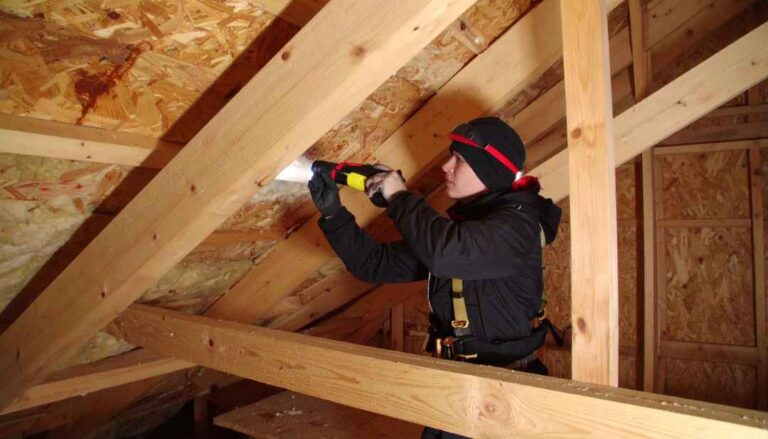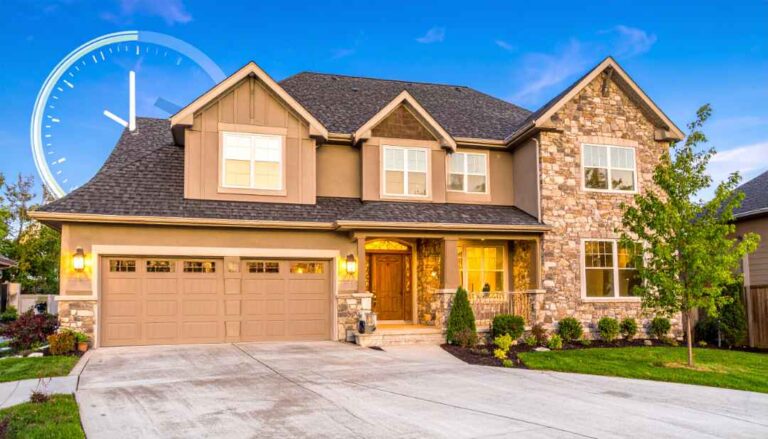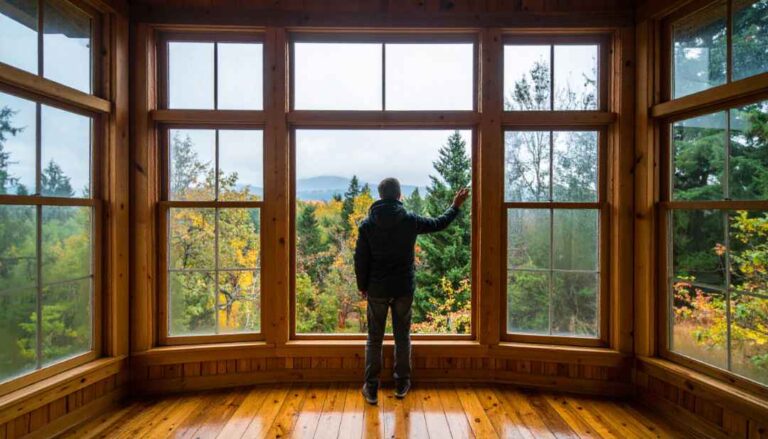The Wavy Mystery on Your Home’s Exterior
You step outside your Chicagoland home, perhaps after a particularly hot summer day or a strong gust of wind, and you notice it: your siding isn’t perfectly flat anymore. Instead, sections appear warped, buckled, or wavy, creating an unsightly ripple effect across your home’s exterior. Your immediate thought is, “What caused this, and how do I fix it?”
For homeowners in Illinois, warped or buckled siding is a common and concerning issue. But diagnosing the root cause can be tricky. Is it a sign of recent storm damage, an unfortunate consequence of improper installation from years ago, or simply the unavoidable wear and tear of time in our challenging climate? Understanding the difference is crucial, as it dictates whether you’re looking at an insurance claim, a warranty issue, or a necessary home repair.
At Seidel Exterior Group, we’ve been expertly assessing and restoring Chicagoland exteriors since 1970. We’ve seen every type of siding distortion imaginable and understand the specific mechanisms behind them. This article will help you differentiate between warped or buckled siding caused by storm damage versus improper installation, providing you with a step-by-step guide to identifying the culprit and knowing when to call in the professionals.
Why Siding Warps and Buckles: The Underlying Mechanisms
Siding, especially vinyl, is designed to expand and contract with temperature changes. Think of it like a long piece of plastic that gets bigger when it’s hot and shrinks when it’s cold. All types of siding, even rigid fiber cement, can experience some form of distortion under specific stresses. When this natural movement is restricted or overwhelmed, or when the material itself is compromised, you get warping and buckling.
Ignoring warped or buckled siding, regardless of the cause, can lead to serious problems:
- Water Intrusion: Gaps created by buckling or warping allow wind-driven rain and melting snow to penetrate behind the siding, leading to rot, mold, and damage to your home’s sheathing and interior.
- Reduced Energy Efficiency: Compromised siding creates air leaks, leading to higher heating and cooling bills.
- Pest Infestation: Gaps become entry points for insects and rodents.
- Aesthetic Degradation: It significantly detracts from your home’s curb appeal and value.
- Accelerated Damage: A compromised panel is more susceptible to further damage in subsequent storms.
Differentiating the Causes of Siding: Storm Damage vs. Installation Problems
Let’s examine the distinct characteristics that help identify whether your warped siding is a symptom of recent storm activity or a ghost of installations past.
Cause 1: Improper Siding Installation (The Silent Saboteur)
This is one of the most common causes of warped or buckled siding, especially with vinyl. Vinyl siding is designed to “float” on the wall, not be nailed tightly, to allow for thermal movement.
- What it Looks Like:
- Uniform Rippling/Waving: The most tell-tale sign of improper installation is a consistent, wavy, or rippled appearance across multiple panels, particularly on long, flat stretches of wall. The panels look like they are “too tight” or “bubbling out.” This often appears soon after installation or after the first significant temperature swing (hot or cold).
- Buckling Around Windows/Doors: Siding that is buckled, bowed, or bulging specifically around windows, doors, or other trim elements. This happens when siding is nailed too tightly to the framing around these openings, preventing it from expanding freely.
- Nail-Related Issues:
- Face Nailing: Nails visible through the face of the siding (not in the designated nailing hem). This immediately restricts movement.
- Over-Tight Nailing: Nails hammered too tightly, “pinning” the siding to the wall instead of allowing it to hang loosely on the nailing hem. This is the primary culprit for buckling in vinyl.
- Nails Popping Out: Siding that is improperly installed or under excessive stress might cause nails to pull out, leading to panels loosening or detaching.
- Lack of Expansion Gaps: No visible gaps (usually 1/4″ or more) where siding panels meet corner posts, J-channel, or trim. This lack of space causes the siding to buckle when it expands.
- Uneven Appearance: Panels that are noticeably crooked, misaligned, or don’t overlap properly, creating visible gaps or uneven lines. This indicates poor craftsmanship from the start.
- Missing or Improper House Wrap/Moisture Barrier: While not directly causing warping, neglecting this crucial underlying layer during installation can lead to moisture issues behind the siding, which can then cause structural swelling or mold that indirectly affects the siding’s appearance.
- “Clapping” Siding: If your siding makes excessive clapping or rattling noises in moderate winds, it can indicate it was nailed too high in the nailing hem, allowing too much movement, or that fasteners are loose due to improper installation.
- Underlying Cause: The installer failed to adhere to manufacturer guidelines, especially regarding proper fastening, expansion gaps, and material handling. This is a workmanship issue.
- When It Appears: Often within the first year or two after installation, or after the first major season of temperature changes (e.g., a hot summer or cold winter). It’s a chronic problem that worsens over time, not a sudden event.
- Warranty Implications: Improper installation almost always voids the manufacturer’s warranty on the siding material itself. You would need to rely on the installer’s workmanship warranty (if they provided one and are still in business).
Cause 2: Storm Damage (The Sudden Impact)
Wind, hail, and flying debris can directly damage siding panels, leading to warping or distortion that is distinct from installation errors.
- What it Looks Like:
- Localized, Irregular Damage: Warping or buckling that is confined to specific areas, often in a more irregular pattern, rather than a uniform wave across an entire wall. This often coincides with visible impact points.
- Cracks or Holes: Alongside the warping, you’ll see clear signs of impact like chips, cracks (especially in vinyl or fiber cement), punctures, or tears caused by hail or wind-blown debris. The distortion radiates from these impact points.
- Panels Blown Off: Sections of siding entirely detached or hanging loosely, pulled directly out of their channels or ripped from fasteners by powerful wind gusts. This usually occurs during or immediately after a severe windstorm.
- Dents (on Vinyl or Aluminum): Visible dimples or dents from hail. While sometimes cosmetic, extensive or deep dents can distort the panel.
- Scuff Marks/Abrasions: Wind-blown grit or debris can create abrasive marks, sometimes accompanied by subtle warping due to the force.
- Co-occurring Damage: Look for other storm damage on your property, such as roof damage (missing shingles, hail dents), bent gutters, damaged window screens, or dents on your car. This suggests a widespread weather event.
- Impacted Siding Material: Fiber cement, being more rigid, typically cracks or chips from impact rather than buckling, but the impact can cause localized distortion.
- Underlying Cause: Direct force from external weather events (wind, hail, debris).
- When It Appears: Immediately after a specific storm event. It’s a sudden onset.
- Warranty/Insurance Implications: Damage caused by sudden, unforeseen external events like severe storms is typically covered by your homeowner’s insurance policy, subject to your deductible and policy terms.
Spotting the Difference: A Quick Diagnostic
When you see warped or buckled siding, ask yourself these questions:
- When did it appear? Was it sudden after a specific storm (likely storm damage) or has it developed gradually over time, especially after temperature changes (likely installation error/aging)?
- Is it uniform? Does it ripple consistently across large, flat sections of wall (likely installation error), or is it localized, irregular, and concentrated near other signs of impact (likely storm damage)?
- Are there other signs? Do you see cracks, holes, or obvious impact points on the warped panels? Is there collateral damage elsewhere on your property? (Points to storm damage).
- How old is the siding? If it’s relatively new (1-5 years) and showing widespread, uniform buckling, it’s highly suspicious of improper installation. Older siding might show age-related warping, but sudden, severe buckling is still often storm-related or linked to foundational issues.
- Can you feel resistance? For vinyl, if you gently try to slide a panel horizontally from its end lap, does it move freely (good installation) or does it feel “stuck” (likely nailed too tightly)?
Your Next Step: Call a Professional (The Seidel Exterior Group Difference)
While this guide provides insights, accurately diagnosing the cause of warped or buckled siding often requires an expert eye. A professional inspection ensures the correct diagnosis and leads to the appropriate, lasting solution.
Why trust Seidel Exterior Group with your siding assessment and repair?
- Expert Diagnostics: Our certified storm damage experts are trained to differentiate between storm-induced damage and issues stemming from improper installation or aging. We understand the specific characteristics of warped vinyl, wood, and fiber cement siding in Illinois.
- Comprehensive Exterior Assessment: We don’t just look at the siding. We assess your entire exterior envelope, including the underlying house wrap, flashing, and even the roof, to identify any contributing factors or hidden damage.
- Accurate Recommendations: Based on our diagnosis, we’ll provide honest, transparent recommendations. Whether it’s a precise repair, a partial replacement, or a full siding overhaul, we ensure the solution addresses the root cause.
- Insurance & Warranty Guidance:
- If it’s storm damage, we have extensive experience working with insurance adjusters in Chicagoland. We can provide detailed documentation and advocate for a fair settlement.
- If it’s an installation issue, we can help you understand if your installer’s workmanship warranty might cover the repair (though this can be challenging if the original installer is no longer in business). As a James Hardie Elite Preferred Contractor, we guarantee our installations meet the highest standards to prevent these issues from the start.
- Quality Workmanship: We use high-quality materials and employ skilled installers dedicated to meticulous craftsmanship, ensuring your siding performs optimally and enhances your home’s beauty for decades.
Decode Your Siding’s Message, Secure Your Home
Warped or buckled siding panels are your home trying to tell you something. Whether it’s a distress signal from a recent Chicagoland storm or a tell-tale sign of an installation flaw, understanding the cause is paramount to preventing escalating damage and preserving your home’s integrity.
Don’t let the mystery of distorted siding lead to bigger problems. A professional, experienced exterior contractor can provide the definitive diagnosis and the lasting solution your home needs.
If you’ve noticed warped or buckled siding on your Chicagoland home, don’t delay. Contact Seidel Exterior Group today for a free, comprehensive inspection. Let our experts provide the clarity and quality craftsmanship you need to ensure your home’s exterior is beautiful, functional, and fully protected.



